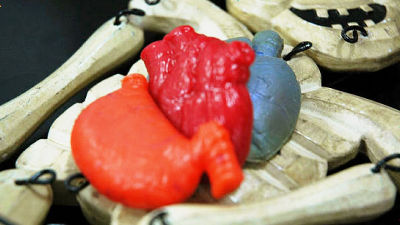By outputting living cells such as blood vessels and internal organs into a transparent gel with a 3D printer, it becomes like this when viewed in a movie

With a 3D printerStudy to make genuine heartIn order to create complex and small-sized structures that had been thought to be difficult to output with conventional 3D printers, the technology of "output living cells in a transparent gel" Development is proceeding.
Writing in the granular gel medium | Science Advances
http://advances.sciencemag.org/content/1/8/e1500655
Gel scaffold paves way for 3D printing of biological organs | New Scientist
https://www.newscientist.com/article/dn28252-gel-scaffold-paves-way-for-3d-printing-of-biological-organs/
You can see in the following movie how a complex structure is made by inserting a needle of a 3D printer into the gel.
3D-printing needle creates intricate objects in soft gels - YouTube
A thin needle of a 3D printer is inserted into a container containing a transparent gel, and an object is output in the gel. Compared to the scale displayed on the right side of the container, the width of the object is very small, about 2 mm.

By supporting the object coming out of the needle of the 3D printer as a foothold, a complicated structure with a meandering and curved shape is completed. The gel is made of acrylic acid polymer and it has viscosity like disinfection gel for palm.

With conventional 3D printing technology there was a problem that complicated structures would be broken before printing was completed. However, with the method of outputting to the inside of the gel that was announced this time, it is possible to prevent the structure from bending and distorting, and to output objects of the conventional 1 / 10th size with the thinness of two sheets . This technology is expected to be utilized when creating biological tissues such as visceral organs and blood vessels with 3D printers.

The needle has moved to the top of the container and the output is completed. As the gel is transparent, it seems as if objects are being output in the air.

Next seems to make objects of about 20 mm in size.
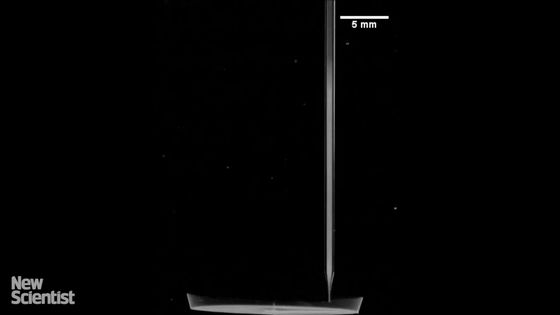
A nested structure that outputs further to the inside of the outputted object.
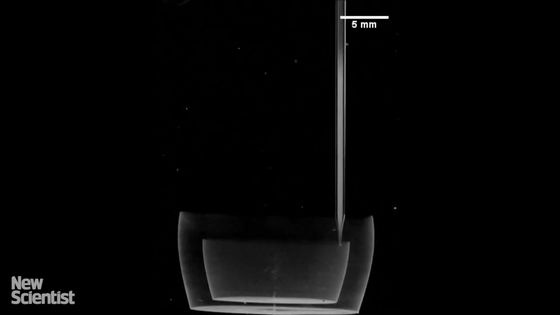
Make an object with four layers, then output the upper half of the container.
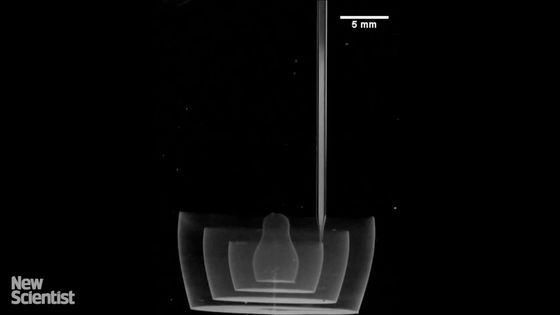
The upper and lower seams are so smooth that they can not be seen.
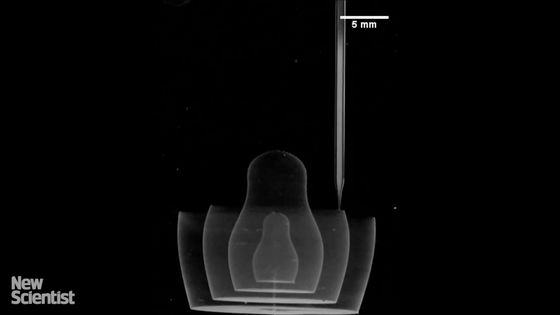
A matryoshka-like object is completed.
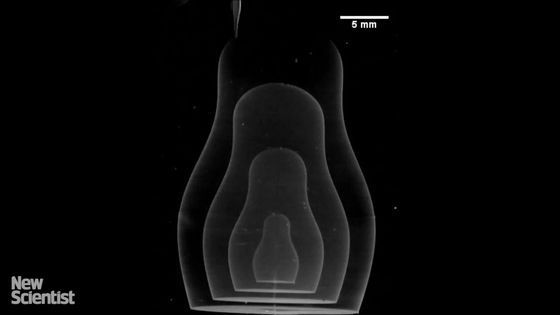
Besides, by creating an object in the gel, it is possible to output small and complicated structures. Thomas Angelini of the University of Florida, the leader of the research team, says, "Since the gel is essentially an individual, it is possible to support the output." However, it seems that small objects below the prescribed size slip in the gel and can not be output.
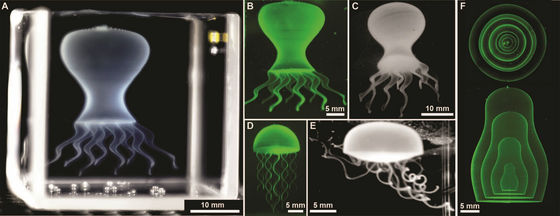
The research team actually succeeded in producing cells of human blood vessels and kidneys of dogs by outputting living cells using this technology. He also said he has succeeded in producing brain replica models by outputting silicone, hydrogel and the like.
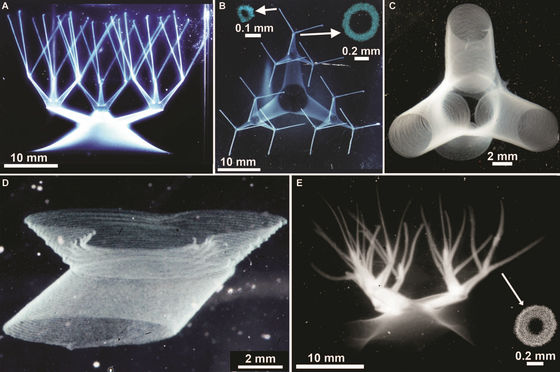
Angelini commented, "I am convinced that a new way to 3D printing technology for living organs has opened." The current problem is that since the gel is not an organic matter, it is impossible to keep the living tissue outputted by the 3D printer alive, so that the output of the living tissue using the gel remains active in the medical field. It seems necessary to proceed.
In the past, machines have also appeared that output liquid resin in a gel with a 3D printer and harden it with UV light.
Printing in gel takes 3D printing freeform and enables an undo function
http://www.gizmag.com/suspended-deposition-3d-printing/28508/
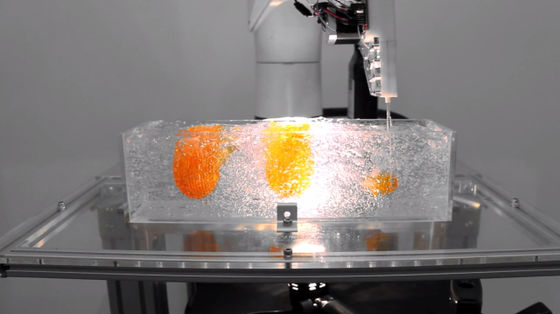
Related Posts:





